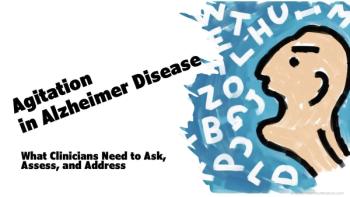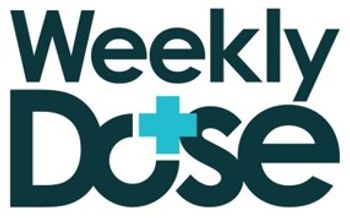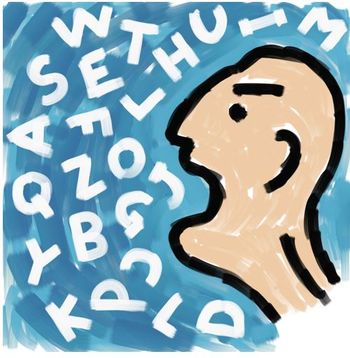
Markings on a paper by elderly man
A left-handed 84-year-old retired attorney is seen for a routine scheduled visit 5 months after a stroke. The nondominant hemisphere was affected by an embolism that arose in the newly fibrillating left atrium.
This article was originally presented as an independent educational activity under the direction of CME LLC. The ability to receive CME credits has expired. The article is now presented here for your reference. CME LLC is no longer responsible for the presentation of the article.
The Case
A left-handed 84-year-old retired attorney is seen for a routine scheduled visit 5 months after a stroke. The nondominant hemisphere was affected by an embolism that arose in the newly fibrillating left atrium. Dense right hemiparesis has since eased considerably, largely because of much rehabilitation therapy. Documented right homonymous hemianopsia has been accompanied by hemineglect and extinction on bilateral simultaneous sensory stimulation. Primary sensory function is intact.
Voices no complaints. His wife says he is "holding his own."
Heart rate, 72 beats/min and regular. Participates well in conversation and interacts with both the physician and his caregiver spouse. Right-sided weakness has eased but is still detectable. When asked to cross out all the lines on a preprinted form, he completes the test as shown.
More History/Physical
Has organic heart disease with atrial fibrillation that was first noted at time of stroke. Intellectually has been one step slower than before the stroke, but still reads avidly.
Hard of hearing, impairment in this domain evident. Interested and sensible in conversation; range of topics discussed diminished from when it was pre-stroke. Lungs clear to auscultation. Heart reveals no S3. Bilateral simultaneous stimulation not retested. Tends to attend better when approached from the right than from the left; seems to move his head to keep speaker in view. Gait is limited and required assist device and help of one person.
Laboratory Findings
Creatinine 1.5 mg/dl. Hct 38%. B12, TSH and VDRL not retested: were normal during acute phase of stroke.
What's Your Diagnosis?
•
•
•
•
•
The correct diagnosis is:
Compensatory action
Forty of the 41 lines on the test have been crossed out. This constitutes a normal result, which delighted me because the patient's performance far exceeded the result expected based on stroke-related losses that I had witnessed when he first had the stroke and in the months since. Neither I nor anyone else had administered this test earlier in his course and I cannot attest to whether he would have been part of the large fraction of affected patients who cannot complete the test at all, let alone correctly.1
Case DiscussionDetails Of The Test Result
The crossing-out task is called Albert's test1,2; it is used to demonstrate perceptual neglect. Hemineglect can occur even without hemianopsia, although the two often coexist. The test is administered by presenting the blank form to the patient (Figure 1), pointing out a few lines-including those to the extreme right and extreme left-and demonstrating what is required by crossing out the central line oneself.
Scoring is straightforward: after the patient has completed the test to his or her satisfaction, all uncrossed lines are counted. If more than 70% of missed lines lie ipsilateral to the motor deficit, hemineglect is diagnosed. Such an abnormality is more common in nondominant parietal lobe infarcts than in dominant hemispheric strokes. Of more vivid and immediate import, an abnormal Albert's test is independently and significantly associated with more loss of function and higher mortality in the 6 months after the test.
Tests Of Nondominant Parietal Function
Although both clinicians and families find less devastation when (nondominant hemispheric) strokes produce no aphasia, the nondominant parietal lobe-typically involved in middle cerebral artery strokes-carries a formidable deficit of its own: the loss of visual attention to the contralateral half of space-ie, hemineglect. Particularly when accompanied by a neurologically based denial of illness-anosognosia-hemineglect renders rehabilitation much more difficult, lengthy, and less likely to restore full functional status.3
Accordingly, numerous ingenious tests of nondominant lobe functions have been devised. These have not been rendered obsolete by our ability to image the damaged areas through CT and MRI of the brain. In our patient, such neuroimaging, just after the stroke, had shown a large infarct that incorporated precisely the areas that subserve visual information transmission to the occipital cortex (the centrum semiovale) and visual attention (left temporoparietal cortex).
After this first encouraging result, I tried 2 other tests of visuospatial neglect and construction. In the line bisection test (Figures 2 and 3), the patient is asked to bisect a single 200-mm vertical line; missing by more than 6 mm is considered an abnormal.
The other test is the clock-drawing test, which can be extended to subdivide poor performers into those with visuospatial dysfunction and those with executive dysfunction. (The latter is defined as an inability to execute complex sequences of planning and carrying out.)
Persons who have visuospatial loss do poorly on a task that requires initiation (CLOX 1: "Draw a clock with all the numbers, and with hands set at 1:45."). They are likely to do no better on CLOX 2, in which you show the patient a clock you have drawn yourself within a preprinted photocopied circle and ask him to copy it (Figures 4 and 5).5,6 However, when executive function is defective but visuospatial function is intact, the patient performs much better on CLOX 2.
Roles Of Intellectual Power And Will
Results of this man's Albert's test contrasted strikingly with my expectation: he missed only a single line (number 15). He accomplished this by compensating for a persistent field cut by moving his head and the paper while he worked and restudying his output and the task repeatedly. Strong motivation was a key to this success: as is so often the case, the patient recognized that no matter how casual the delivery, the results were important and deserved his best effort. His extraordinary performance constituted powerful testimony to the value of will and strategy, or what has been called the replacement of formerly unconscious neurologic action with explicit, intentional psychologic action.4
This man's mark on the vertical line lay exactly 6 mm off center, which is the cutoff between diagnosable abnormality and none. On both clock-drawing tests, he put all the numbers in place with minor asymmetry and 1 misdrawn arrow. Some points were untestable because I inadvertently failed to specify the proper time on one test and the need to show the time on the other. The net interpretation was of no executive or visuospatial dysfunction on his part, but of a failure of proper reading and retention on mine. Fortunately the latter did not vitiate the former; if anything, it strengthened the sense of his superb handling of the tests.
Blank Test Forms
The forms have been reproduced in hopes that readers of "What's Your Diagnosis?" will have occasion to use them. Like other recently devised and modified mental status screening devices, they are designed for ease of use, such that office or hospital staff with less training than the physician, nurse practitioner, or physician's assistant can administer them effectively.
As the present instance illustrates, these test results can prove heartening and surprising or confirmatory and sad: a test that never changes our thinking about a patient is redundant. The opposite caveat always bears repeating, however: if the result seems highly inconsistent, include inapplicability and intrinsic error of the test in the listing of other possible diagnostic interpretations.
References:
References:1. Fullerton KJ, McSherry D, Stout RW. Albert's test: a neglected test of perceptual neglect. Lancet. 1986;1:430-432.
2. Albert M. A simple test of visual neglect. Neurology. 1973;23:658-664.
3. Chakravorty NK. Parietal lobe syndrome due to cerebrovascular accidents. Practitioner. 1982;226:129-131.
4. Friedman PJ. Spatial neglect in acute stroke: the line bisection test. Scand J Rehabil Med. 1990;22:101-106.
5. Royall DR, Cordes JA, Polk M. CLOX: an executive clock drawing task. J Neurol Neurosurg Psychiatry. 1998;64:588-594.
6. Royall DR, Espino DV. Not all clock-drawing tasks are the same. J Am Geriatr Soc. 2002;50:1166-1167.
7. Hodgins E. Episode: Report on the Accident Inside My Skull. New York: Simon & Schuster; 1971:206.
Newsletter
Enhance your clinical practice with the Patient Care newsletter, offering the latest evidence-based guidelines, diagnostic insights, and treatment strategies for primary care physicians.
































































































































































































































































































